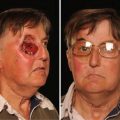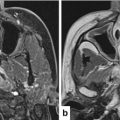The broken line or box is meant to signify the existential element to health and illness. One should consider the total needs of the patient and not just their pain and symptoms. Where symptoms cannot be controlled, it is because all aspects of a person have not been considered, for example, unresolved personal conflicts.
The Transition from ‘Being’ to ‘Un-being’
To understand spirituality and spiritual pain, it can be considered by reflecting on the author of the novel ‘Ring of Bright Water’ by Gavin Maxwell which was set in rural Scotland. He is reported to have recalled the great pain of the solitary moment of moving from ‘being to un-being’ when he was dying of cancer.
Doctors are rarely present at the moment when patients die and tend not to have or avoid conversations about dying. However, it could be argued that reducing spiritual pain is facilitating a person to the transition from ‘being’ to ‘un-being’ [6].
Another author [7] wrote in a similar vein describing who illness is a threat to our very being:
As soon as we are ill we fear that our illness is unique. We argue with ourselves and rationalise, but a ghost of the fear remains. And it remains for a very good reason. The illness, as an undefined force, is a potential threat to our very being.
Subjectivity and Objectivity
It is challenging to provide objectivity when we reflect on how we might talk to dying patients as it is an area of subjectivity. In relation to the term spirituality and spiritual pain, there are several possible definitions. For example, spirituality as a mechanism which allows a person to experience transcendent meaning in life or it could be as is often the case something which is frequently expressed as a relationship with God. Spirituality can also be about nature, art, music, family or community and so whatever beliefs and values give a person a sense of meaning and purpose [8].
In order to try and be objective about what is important to patients rather than us considering what might be important, a USA paper considered the factors important at the EOL by patients, family, physicians and other care providers [9]. A random national survey was conducted in 1999 of seriously ill patients (n = 340), bereaved (n = 332), physicians (n = 361), other carers (nurses, social workers, chaplains, hospice volunteers; n = 429). The paper found 44 attributes of quality at EOL as important. The key findings of this paper were the following issues which were important to patients and others but not so important to physicians (p < 0.001):
- 1.
Be mentally aware
- 2.
Be at peace with God
- 3.
Not be a burden to family
- 4.
Being able to help others
- 5.
Prayer
- 6.
Have funeral arrangements planned
- 7.
Not be a burden to society
- 8.
Feel one’s life is complete
Doctors might have thought that the following would be of the upmost importance:
Pain control
Symptom control
Depression
Cure
However, overall “Freedom from pain” and “Being at peace with God” were ranked as most important (and were statistically equivalent) by patients and doctors. It is important never to make assumptions caring for a dying patient, but to ask them what worries them the most.
Patients Reaching Acceptance That They Are Dying
For most people, death is almost a taboo subject, where a taboo is literally a social prohibition to talk about the subject. In the 1960s, Elizabeth Kubler Ross, a Swiss born psychiatrist working in the United States, was someone who also had a considerable influence on the modern hospice movement. She is perhaps best known for her proposed five stages of anticipatory grief of which the last stage is when the patient moves from depression to acceptance of their illness [10]. As part of the taboo, it could be argued that it is rare to experience a patient who is dying that reaches the stage of acceptance, but rather more appropriately they are resigned to their fate and so in a state of resignation, thus adding a sixth stage to the original proposal.
It is vital that doctors talking to dying patients do not view these view these five stages as written in tablets of stone and that in reality few patients reach a stage of acceptance and it is important to recognise this. Despite what anyone tells you, remember that most patients are not in acceptance of their fate but rather resigned to it.
As Doctors, We Have Medicalised Death
When we communicate with dying patients, we should bear in mind that as well as ameliorating physical pain and symptoms, for example, a cancer patient, our greatest role, although we least appreciate it, is facilitating the transition to ideally acceptance of dying. This is difficult as for the public [11].
It is rare for the majority of the public to see a dead body.
Dying has been ‘medicalised’ in UK institutions where more than 70 % of people die.
Death has been transformed from being an accepted everyday occurrence and natural part of the life cycle, into a ‘taboo subject’.
Dying has been medicalised, professionalised and sanitised to such an extent that it is now alien to many people’s daily lives (‘The lost art of Dying’).
As we attempt to communicate with our patients who are dying, in order to help them accept their fate, we need to take into account the personal conflicts with family members or friends that are so important in enabling a person to re-order their priorities and let go. Getting involved in these conversations and circumstances is something that doctors tend not to do as they do not appreciate that although they are not medical their influence on the patient’s state of mind are paramount. During our conversations with the dying, it is difficult for both us and our patients to come to terms with death as a ‘rite of passage’ in which we will all participate as family member, provider or, eventually, patient.
All, whether doctor or patient contradict all that we know and so what was written as long ago as 1612 Sir Francis Bacon that death is part of the natural life cycle [12]; ‘To die is as natural as to be born’. Very poignant, as now you have to have a form signed which allows you to die, the DNAR (Do Not Attempt Resuscitation form) and inevitably end up with a syringe driver in case of pain or perceived distress where the ‘doctrine of the double effect comes into place’ where the intention is to relieve symptoms but unintentionally the use of opiates may hasten death.
Stay updated, free articles. Join our Telegram channel

Full access? Get Clinical Tree






